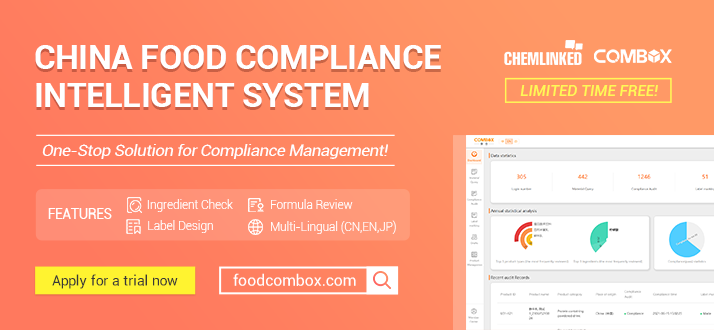2019 Compliance Review: Pesticides Regulatory Updates in EU and US
PRIA 4, the Pesticide Registration Improvement Extension Act (United States) is Promulgated, with Raised Pesticide Registration and Review Fees
On March 8, 2019, the U.S. Environmental Protection Agency promulgated the Pesticide Registration Improvement Extension Act of 2018 (PRIA4), which will be valid for five fiscal years and will expire on September 30, 2023. According to the records of PRIA4, EPA pesticide registration service fees have generally risen. Based on this, the EPA service fees for pesticide registration received on or after October 1, 2019 will continue to increase at a rate of 5%, and the service fees will continue to increase after September 30, 2021.
EFSA evaluates the applicability of existing (Q)SAR models in predicting pesticide genotoxicity and similarity analysis related to pesticide genotoxicity to facilitate toxicity classification and cross-reference
On March 21, 2019, EFSA organized an assessment of existing computer models to predict the genotoxicity of pesticides and their metabolites, including the influence of metabolite structure changes on genotoxicity as well as the predictive power of (Q)SAR model in in-vitro and vivo genotoxicity tests. Structural alarm analysis performed under the supervision of experts rationalizes most changes in genotoxicity patterns. The findings of this work apply to weight of evidence approaches and hierarchical schemes.
EFSA Publishes Guidance for Joint Exposure Assessment of Multiple Active Substances
On March 25, 2019, the EFSA published the Guidance on Risk Assessment of Combined Exposure to Multiple Chemicals. It supplemented current EU regulations that allowed only for single substance assessments. The complexity of the interaction of mixed chemical substances and the variations of the mixtures, led the scientific committee of EFSA to develop a practical tool to provide support and information for risk assessors. As for pesticides, it also offers new solutions and technical support for the risk assessment of compound pesticides.
Bees Become the Focus of Environmental Risk Assessment for Pesticides
In order to curb the decline of bee populations and meet the sustainable development goals of modern agricultural practices, pesticide regulatory agencies in various countries have listed the impact of pesticides on bees as an important factor in the registration of pesticide products.
In March 2019, the European Commission authorized EFSA to update the 2013 version of the PPP Guidance Document on the risk assessment of plant protection products on bees. This update
will take into account the view of more stakeholders, focus on the following key points: methods of natural bee mortality, ways of exposure (spray, seed treatment and granules), list of plants that attract bees, and bees high-level risk assessment. The revised draft is expected to be completed by 2021.
In March 2019, EPA updated the RT25 data sheet to guide beekeepers and farmers in protecting pollinating insects such as bees. The pesticides applied via foliar spray, preparation of the pesticide when sprayed on leaves causes 25% mortality of pollinating bees. It is expected that through time, these new advances will help judge toxicity to bees more accurately and guide farmers on what kind of pesticides to apply and when to apply to reduce impact on pollinators.
Ongoing Review of Glyphosate
In 2017, glyphosate was renewed in the EU for 5 years, the end of which term will be December 15, 2022. According to the EU pesticide renewal plan, a new round of renewal applications should be submitted 3 years before the expiration date. The EU established a glyphosate assessment working group in March this year and France, Hungary, the Netherlands and Sweden agreed to launch joint assessments. According to the renewal regulations, applicants for the renewal of glyphosate should submit a written application by December 2019 and a dossier by June 2020. The panel is expected to submit a draft report to the EFSA in 2021.
On April 30, 2019, U.S. EPA released the latest glyphosate research results: Glyphosate products used in accordance with the label will not cause public health hazards, and glyphosate is not a carcinogen.
On August 8, 2019, EPA issued a guidance to glyphosate registrants, establishing EPA will no longer approve claims that glyphosate is carcinogenic. The cancer statement is false and does not meet the requirements of the Federal Pesticides, Fungicides and Rodenticides Act (FIFRA). Misleading labeling requirements in California’s controversial Proposition 65 have misled public awareness on the risks of pesticide products, such as glyphosate–containing products.
New Regulations on Biostimulants in Europe and the United States
In June this year, the new Regulation on fertilizers (EU Regulation 209/1009) was officially released. The new regulation listed biostimulants as a category 6 product, which is also under the jurisdiction of fertilizers. At the same time, the regulation revised the relevant provisions of the PPP regulation to exclude biostimulants. The new regulation came into effect on July 15, 2019 and is expected to be officially implemented by July 2022.
On March 21, 2019, the EPA released guidance documents for the labelling of plant growth regulators and biostimulants for public consultation. Biological stimulants are defined by the method of exclusion and are substances or microorganisms that do not meet the definition of plant growth regulators under the Federal Pesticide Law (FIFRA).




